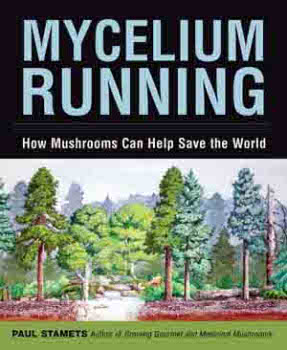
How to Cultivate Edible Mushrooms For Free, Part 1
 I've been on a quest over the
last few months to find a way to produce my own edible mushrooms.
The obvious answer --- what we did --- is to buy commercially developed
spawn to start cultures in our logs. But once we have shiitake
and oyster mushroom logs fruiting, it seems like we shouldn't need to
keep buying the pricey spawn. Can't we save our own "seeds" and
start mushrooms from scratch?
I've been on a quest over the
last few months to find a way to produce my own edible mushrooms.
The obvious answer --- what we did --- is to buy commercially developed
spawn to start cultures in our logs. But once we have shiitake
and oyster mushroom logs fruiting, it seems like we shouldn't need to
keep buying the pricey spawn. Can't we save our own "seeds" and
start mushrooms from scratch?
The internet gives a pretty resounding "no." Most discussions
tell you that you need sterile laboratory conditions to produce your
own spawn, at an estimated cost of at least $1,000 to get
started. Way out of our price range.
Then I stumbled across a reference to Paul Stamets' Mycelium Running: How Mushrooms Can Help
Save the World. Through the wonders of interlibrary
loan, I now have this enticing book in my grubby little hands.
The book tells me "yes we can!" --- it's quite possible to reproduce
your edible mushrooms on the cheap.
I might try the ancient
technique of cutting new logs for our shiitakes and placing them
underneath our existing fruiting logs, hoping that spores will fall off
the shiitake mushrooms and grow on the new logs. For our oyster
mushrooms (and the wild morels we find in the woods), though, there are
some more exact options. This week's lunchtime
series will cover the most interesting techniques, the ones I hope to
try this year. Stay tuned!
| This post is part of our How to Cultivate Mushrooms for Free
lunchtime series.
Read all of the entries: |
Want more in-depth information? Browse through our books.
Or explore more posts by date or by subject.
About us: Anna Hess and Mark Hamilton spent over a decade living self-sufficiently in the mountains of Virginia before moving north to start over from scratch in the foothills of Ohio. They've experimented with permaculture, no-till gardening, trailersteading, home-based microbusinesses and much more, writing about their adventures in both blogs and books.
Want to be notified when new comments are posted on this page? Click on the RSS button after you add a comment to subscribe to the comment feed, or simply check the box beside "email replies to me" while writing your comment.

I can't wait to hear more about the mushrooms. I haven't tried starting mushrooms yet...working on just a couple of things at a time. This year, we're getting a lot of perennial trees and shrubs started on our small property. I know that you have to dunk the shiitake mushrooms, and we don't have a good source of water yet. We're working on establishing some rain barrels which will make that a whole lot easier. Baby steps--lol.
Anyway, I will let you know how the blueberry layering goes. I read in "Secrets of Plant Propagation" by Lewis Hill that highbush blueberries are the hardest small fruit to propagate. As a result, I ordered the lowbush variety. The book, "Hardwood cuttings are used by commercial nurserymen, but home gardeners usually are more successful with softwood cuttings. Rooting chemicals and a mist system are necessary...Lowbush blueberries may be increased by softwood cuttings in the same way as the highbush berries. They can also be grown from seeds taken from the ripe fruit...Wild lowbush berries layer naturally, and both these and the seedlings may be dug up and transplanted in early spring" (p. 121).
There is more information about what type of soil mixture to plant this in and what time of year to attempt to do it, but that's the overall gist. Maybe a softwood cutting would work better than the hardwood cutting?
Don't let lack of water deter you from starting mushrooms. We just got a 15 dollar kiddie pool at K-Mart and use that to dunk our logs in --- fill it up once and it's good to go all summer!
Thanks for the pointers on blueberry propagation. I may have to check out that book....